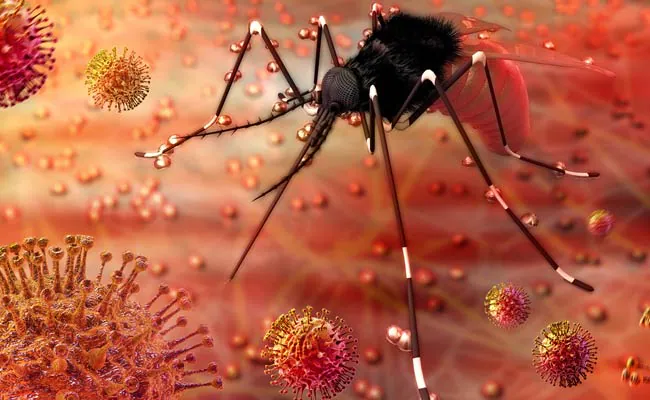The Zika virus is a mosquito-borne virus that was discovered in 1947 in Uganda in a Rhesus macaque monkey. In the 1950s, evidence of infection and illness in people was found in various African nations.
Overview on Zika Virus
Human infections were found sporadically throughout Asia and Africa during the 1960s and 1980s. On the other hand, Zika virus epidemics have been documented in Africa, the Americas, Asia, and the Pacific since 2007.
Zika virus infection has been linked to an increased incidence of Guillain-Barré syndrome in outbreaks during the past ten years. An relationship between Zika virus infection and microcephaly (smaller-than-normal head size) was originally observed when the virus first surfaced in the Americas, with a major outbreak in Brazil in 2015. A retrospective study of the region revealed comparable findings in French Polynesia. The Zika virus, various neurological illnesses, and microcephaly were the cause of the Public Health Emergency of International Concern (PHEIC) that the World Health Organization (WHO) proclaimed from February to November 2016. It was quickly established that the Zika virus was the cause of congenital deformities. Zika virus outbreaks have been seen in most of the Americas and other areas where Aedes aegypti mosquitos are prevalent. Travelers from locations where the Zika virus is now present have been found to be infected, and sexual transmission has been verified as an additional method of infection.
Globally, the number of cases of the Zika virus sickness decreased starting in 2017, however the virus is still spreading at low levels in a number of American nations as well as other endemic areas. Furthermore, Zika virus epidemic activity was discovered in India in 2021, and the first instances of the disease spread locally by mosquitoes were documented in Europe in 2019. 89 nations and territories have so far reported evidence of Zika virus infection spread by mosquitoes; however, worldwide surveillance is still rather low.
Zika epidemiology update (February 2022)
History of Zika virus
Symptoms
The majority of Zika virus infections result in no symptoms at all. If they develop, they usually appear 3–14 days after the infection, last 2–7 days, and are often minor with symptoms including rash, fever, conjunctivitis, muscle and joint discomfort, malaise, and headache. Since these symptoms are shared by both arboviral and non-arboviral illnesses, laboratory confirmation is necessary for the diagnosis of Zika virus infection.
Complications
Microcephaly and other congenital deformities in the newborn, such as limb contractures, excessive muscle tone, abnormalities in the eyes, and hearing loss, are caused by infection with the Zika virus during pregnancy. Congenital Zika syndrome is the aggregate term for these clinical characteristics.
Pregnant women who contract the Zika virus are thought to have a 5-to 15% chance of having newborns with congenital abnormalities; the exact number of these babies is unclear (3). Following both acute and asymptomatic infection, congenital abnormalities develop. Preterm delivery, stillbirth, and fetal death are among the issues that can result from a Zika infection during pregnancy.
Infection with the Zika virus can also result in myelitis, neuropathy, and Guillain-Barré syndrome, especially in older children and adults.
The risk and consequences of Zika virus infection on pregnancy outcomes, preventative and control measures, and the impact of infection on various neurological problems in children and adults are all being studied.

Questions and answers: Zika virus and complications
Transmission
In tropical and subtropical areas, Aedes (Stegomyia) mosquitoes, particularly Aedes aegypti, are the primary vectors of the Zika virus. Typically, Aedes mosquitoes bite during the day. In addition, these mosquitoes spread urban yellow fever, dengue, and chikungunya.
The Zika virus can also be passed from a pregnant woman to her fetus through intercourse, blood transfusions, and potentially through organ transplantation.
Diagnosis
Suspicion of an Aedes mosquito vector infection might be based on symptoms experienced by individuals residing in or visiting places where the Zika virus is spreading. Only laboratory testing on blood or other bodily fluids may confirm an infection with the Zika virus, and even then, the diagnosis must be made and separated from related flaviviruses that cross-react, like dengue virus, to which the patient may have already been exposed or immunized.
Laboratory testing for Zika virus and dengue virus infections
Treatment
There is no specific treatment available for Zika virus infection or disease.
Individuals experiencing symptoms like rash, fever, or joint discomfort should rest, stay hydrated, and take antipyretics and/or analgesics as needed. Because of the danger of bleeding, nonsteroidal anti-inflammatory medicines should be avoided until dengue virus infections are ruled out. Patients should seek medical counsel and care if their symptoms worsen.
Pregnant women who are in places where the Zika virus is spreading or who exhibit symptoms of infection should consult a doctor for laboratory tests, information, therapy, and other clinical care.
Prevention
As of right now, there is no vaccine to treat or prevent Zika virus infection. Research on creating a Zika vaccine is still ongoing.
Mosquito bites
A crucial step in preventing Zika virus infection is protecting against mosquito bites during the day and early evening, especially for pregnant women, women who are trying to conceive, and small children.
Wearing clothing that covers as much of the body as possible, preferably in light colors, creating physical barriers like window screens and closed doors and windows, and applying insect repellent to skin or clothing that contains DEET, IR3535, or icaridin in accordance with product label instructions are all examples of personal protection measures.
Pregnant women and small children who sleep during the day or early evening should do so beneath mosquito nets. The same fundamental safety measures outlined above should be followed by visitors and residents of impacted regions to prevent mosquito bites.
Small pools of water near houses, schools, and workplaces serve as breeding grounds for Aedes mosquitoes. It’s critical to get rid of these mosquito breeding grounds, which includes emptying flowerpots of any standing water, covering water storage containers, and clearing up old tires and debris. In order to support local government and public health measures aimed at reducing mosquito breeding areas, community initiatives are crucial. In order to lower mosquito populations and stop the transmission of disease, health officials may also suggest using pesticides and larvicides.
Vector control operations framework for Zika virus
Prevention of sexual transmission
All individuals infected with the Zika virus and their sexual partners (especially expectant mothers) should be informed about the dangers of sexually spreading the virus in areas where the virus is still actively spreading.

In order to avoid potentially harmful pregnancy and fetal outcomes, the World Health Organization advises sexually active men and women to be counseled and provided with access to a comprehensive range of contraceptive options so they can make an informed decision about whether and when to become pregnant.
Emergency contraceptive treatments and counseling should be easily accessible to women who have engaged in unprotected sexual activity and do not want to become pregnant because of worries about contracting the Zika virus. Women who are expecting should either abstain from sexual activity for the duration of their pregnancy or practice safer sex, which includes using condoms correctly and consistently.
The World Health Organization advises men and women returning from places where the Zika virus is actively spreading to engage in safer sexual practices or abstain from sexual activity for a period of two months for women and three months for men in order to avoid infecting their partners. Pregnant women who live in or are returning from places where the Zika virus is locally transmitted should avoid sexual activity or adopt safer sexual practices during their pregnancy.
Prevention of sexual transmission of Zika virus
WHO response
Through the implementation of the Global Arbovirus Initiative, which is in line with and builds upon recommendations made in the Zika Strategic Response Plan, WHO assists nations in conducting arbovirus surveillance and management.
WHO responds to Zika in the following ways:
assisting nations in the confirmation of outbreaks through its cooperative laboratory network; offering technical assistance and direction to nations for the efficient containment of epidemics of mosquito-borne diseases;
evaluating the creation of new instruments, such as pesticide products and application methods; developing evidence-based policies, plans, and strategies for managing epidemics; offering nations technical assistance and direction for the efficient handling of cases and outbreaks;
assisting nations in enhancing their reporting mechanisms;
offering regional training with some of its cooperating centers in clinical management, diagnosis, and vector control; and
releasing manuals and guidelines for Member States on vector control, laboratory, clinical case management, and epidemiological surveillance.
References
Miranda-Filho D de B, Ximenes RA de A, de Araújo TVB, et al. Final report of a case-control research on the relationship between microcephaly, Zika virus infection, and other risk factors in Brazil. Infect Dis. Lancet 3099(17)30727-2
Reveiz L, Riesen M, Krauer F, and others. Systematic Review of Zika Virus Infection as a Cause of Guillain-Barré Syndrome and Congenital Brain Abnormalities. 2017;14(1) PLoS Med. doi:10.1371/journal.pmed.10022
Zika Virus Infection: Post-pandemic. N Engl J Med. 2019;381(15). doi:10.1056/nejmra1808246. Musso D, Ko AI, Baud D.


